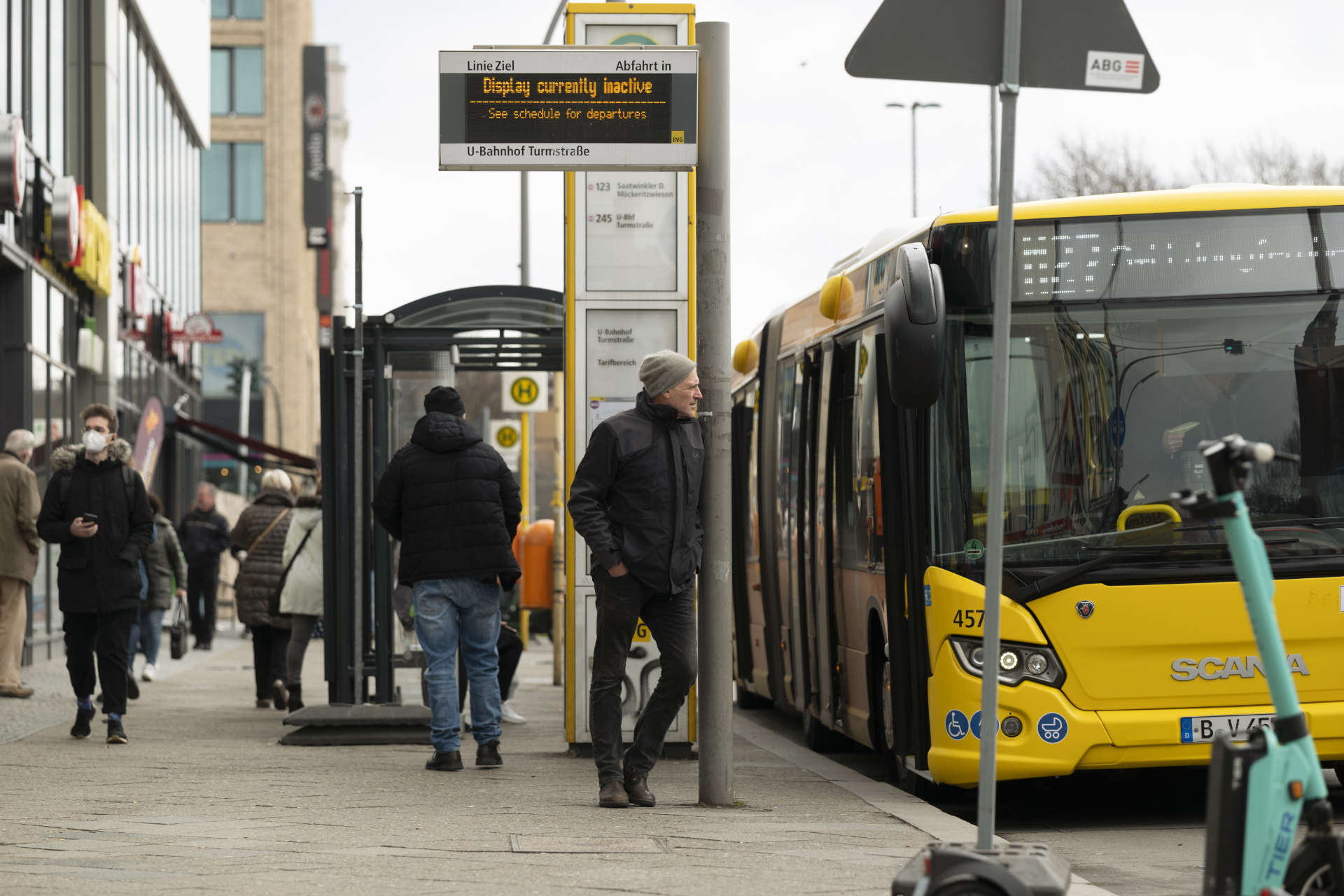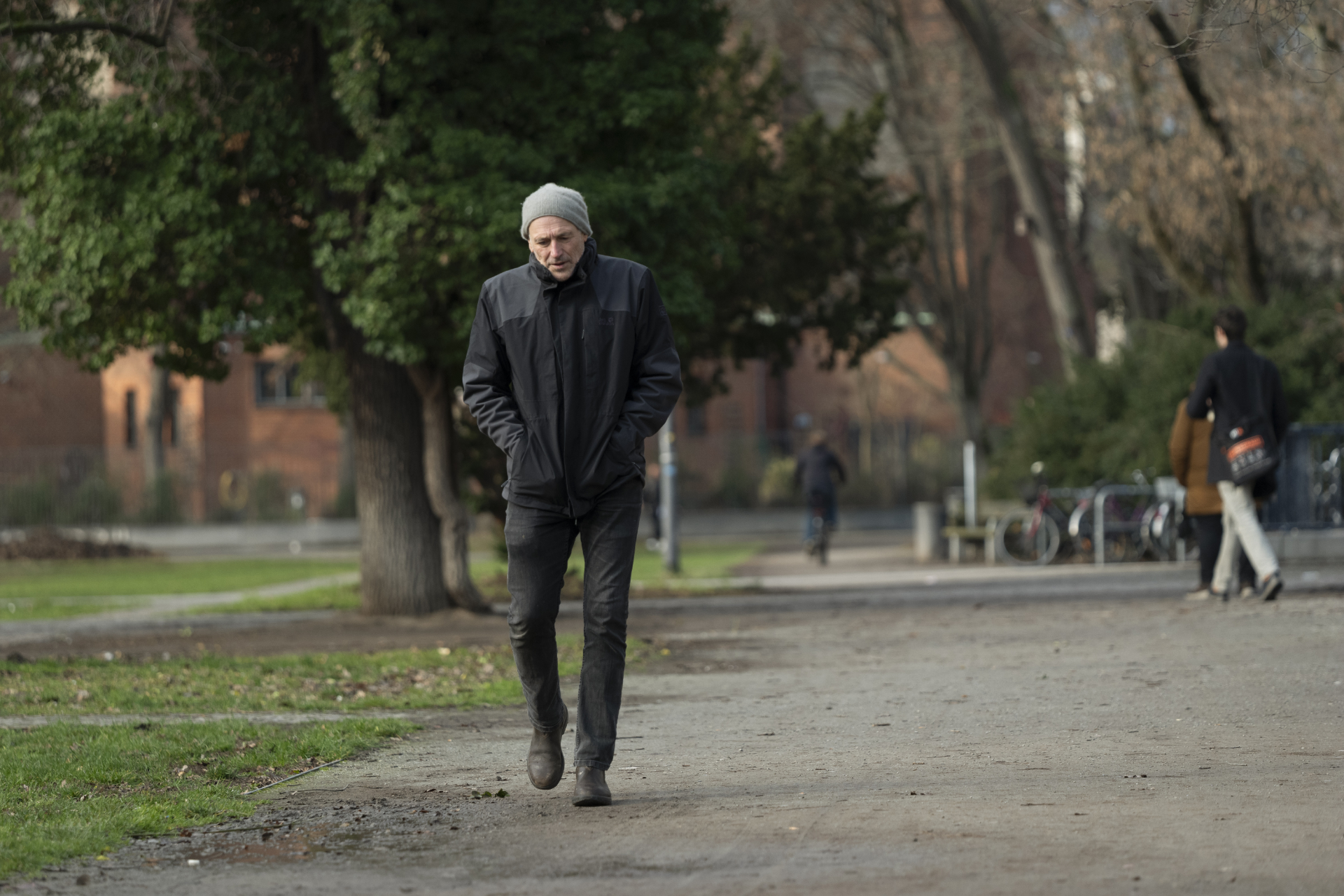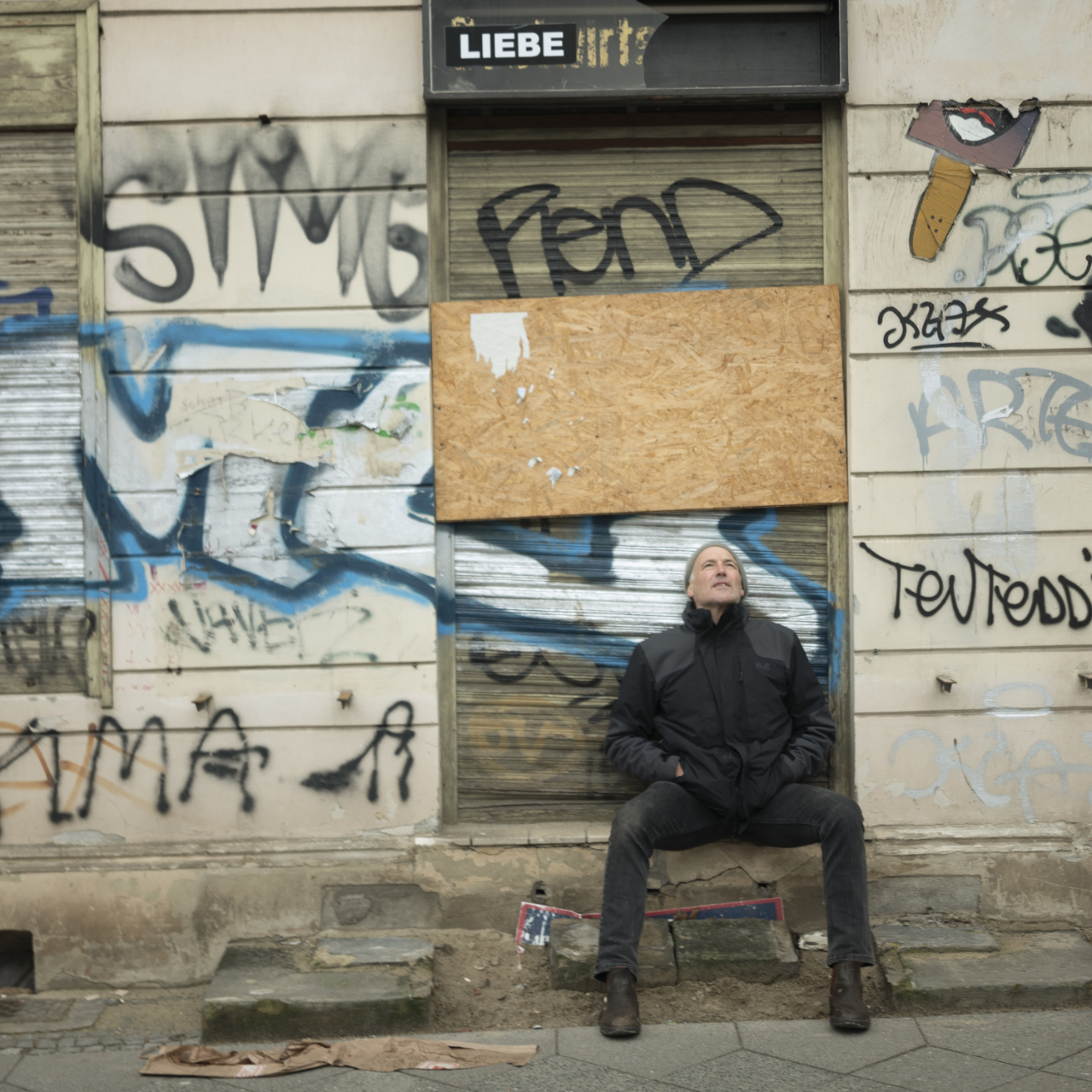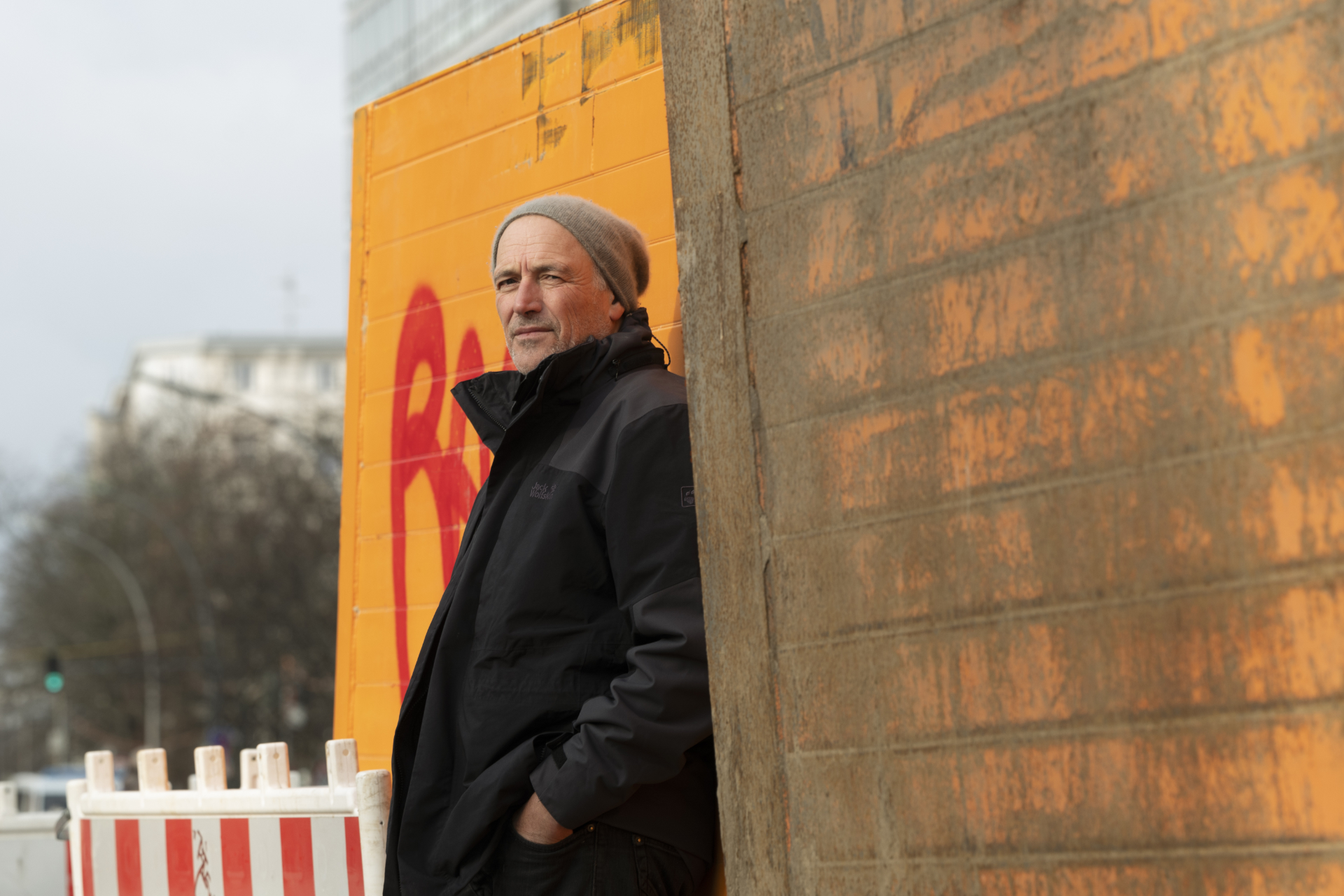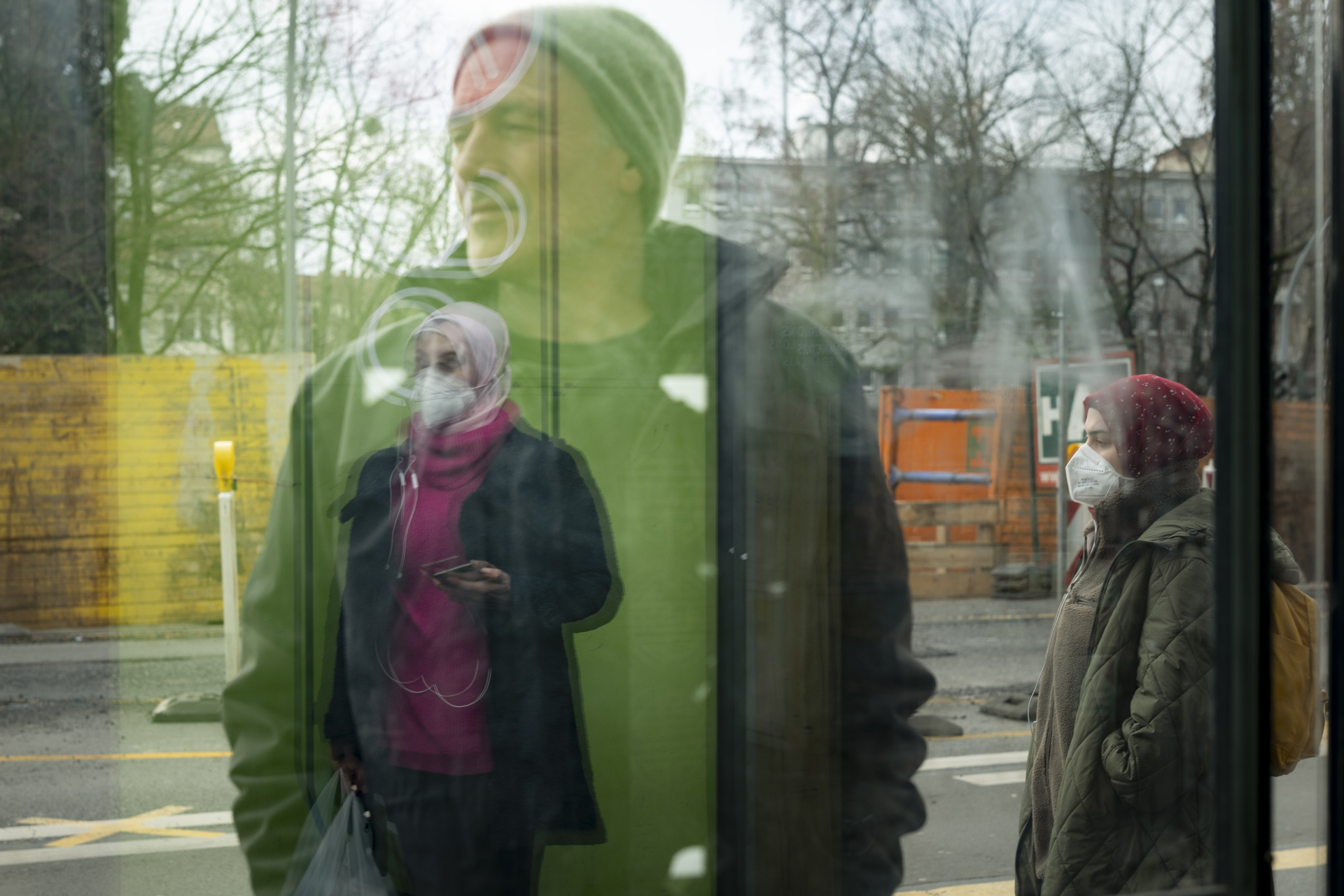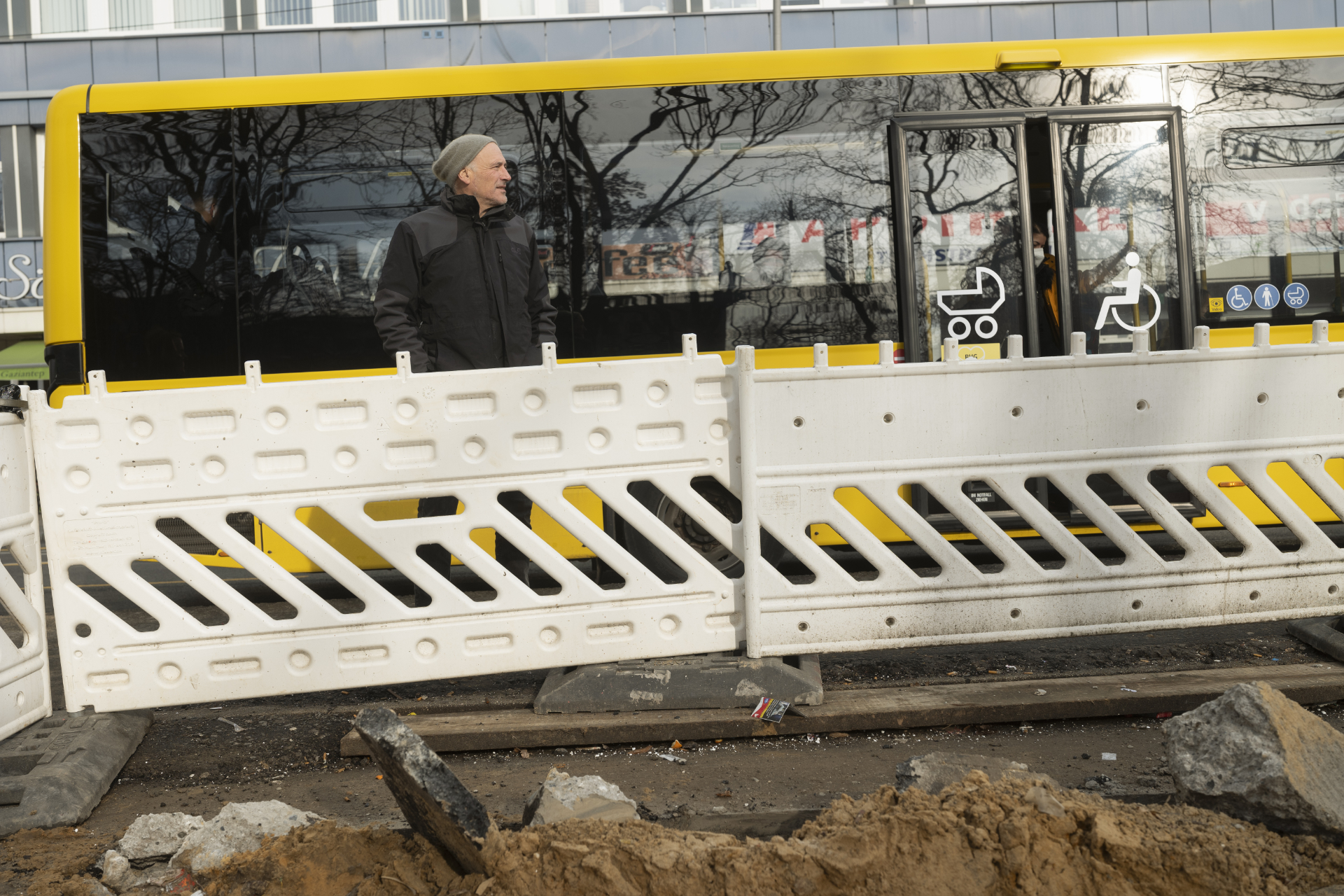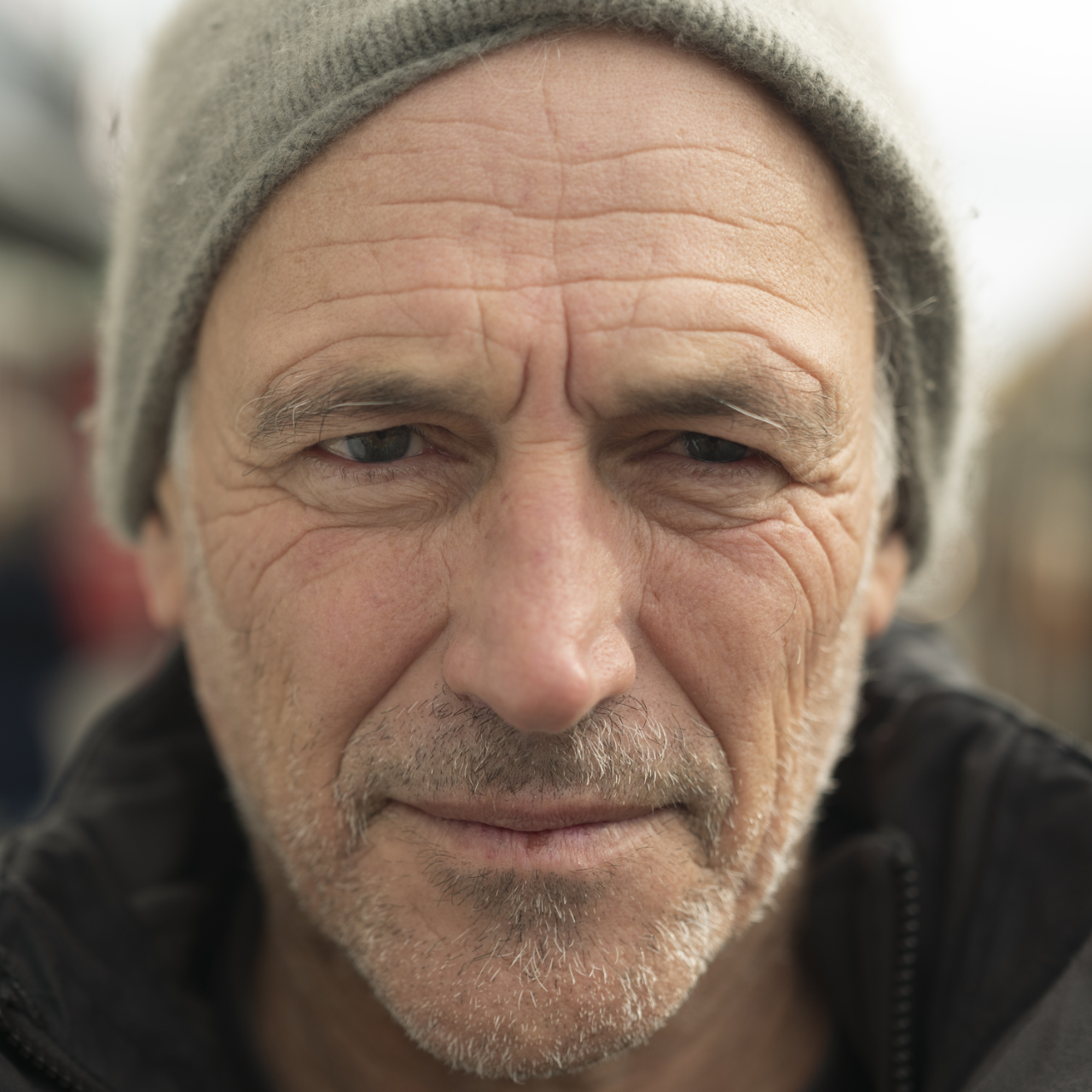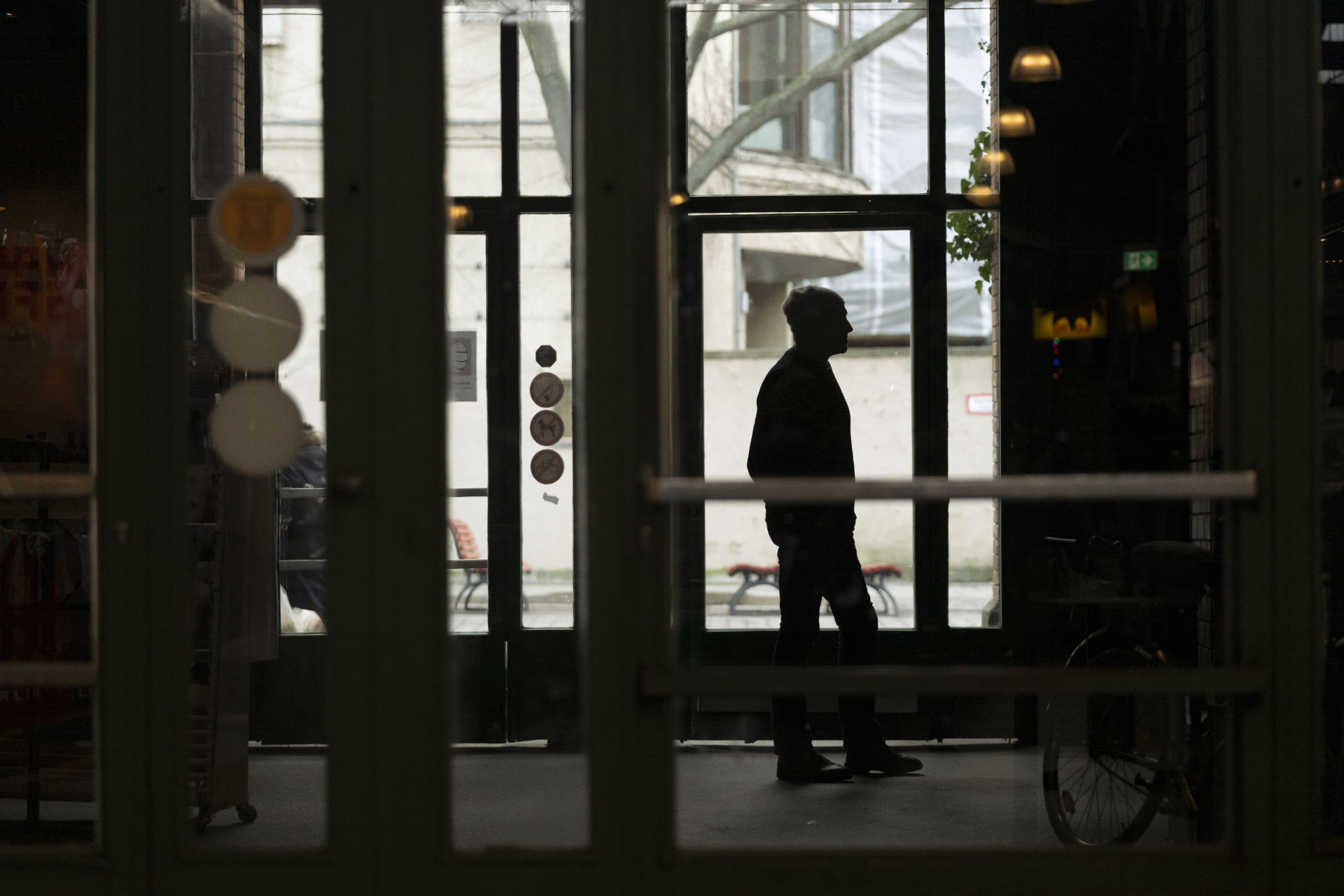Issue 17 / June 2022
The Lens Keeps on Looking
Peter Geimer
Photographer Guy Tillim explains why he is searching for an position of utmost neutrality in a photo
Peter Geimer: What has always fascinated me about photography is its initial indecision. The pioneers of the new medium in the nineteenth century were themselves not yet clear on what exactly they had invented. Was it an instrument of natural science? A new branch of the fine arts? An unforeseen image industry? In the following decades a differentiation into various functions and branches developed – art photography, documentary photography, scientific photography, etcetera. This differentiation still determines how we deal with photographs today, it defines their institutional status, but also their economic value or unvalue. On the other hand there have always been photographs that do not conform to the categorical division into documentary or aesthetic, realistic or constructed and so on. Against this background, your works are of particular interest to me.
You worked for Reuters, for Afrapix, a South African photography collective, and Agence France-Presse, but for more than twenty years your photographic work has also been on view in art museums and galleries. I assume that for you, in retrospect, the works shown there do not represent a radical break with your earlier photojournalistic work but are rather a variation on certain practices and interests?
Guy Tillim: This indecision you speak of has, I believe, been a consequence of rather primitive photographic vocabulary. I mean to say that verisimilitude of the photographic image is a kind of hair-trigger. There’s a rush to meaning and intention of the photographer that is often obscure. Hence the differentiation into various branches of art photography, documentary photography and the like is really an attempt to understand the design of the photographer. The boundaries between these categories are blurring.
There is a perception that a photographer’s interests and preoccupations are different depending on whether his work finds its way into the world through the press or an art gallery. You suggest that this hasn’t really been the case for me, and I think that’s true. For me the difference has been one of intention.
My impression is that in conveying an experience of the world, or a thing in it, there seems to be more and more of a concern with context; in other words, how not to isolate one thing or action at the expense of the whole. In my own work this has translated into the search for an absence of judgment or a suspension of prejudice. Making photographs is surely on the frontier of what it is to immediately describe something, so the art world is trying to make sense of an explosion of visual vocabulary and literacy. We are all photographers now.
After this break with photojournalism, my pictures generally seemed to have a life in books that followed an initial showing in a gallery or museum, but not always. Work I did covering an election in the Democratic Republic of Congo, for example, ran in a Kinshasa newspaper and was shown at documenta 12.
PG: Please let us stay with this aspect for a moment. What you describe as “absence of judgment” and “suspension of prejudice” probably has to do with the fact that your work has long since detached itself from the conditions of photojournalistic practice with its professional rules and norms. Admittedly the choice of motif – for example contemporary life in African metropolises such as Johannesburg, Dakar, Nairobi, or Maputo – still plays a decisive role in your photographs. But when you show your photos in the form of triptychs, as in Museum of the Revolution, your interest in the subject is combined with a high level of attention to the specific potential of the images.
GT: For a long time I was absorbed in trying to emulate European and American photojournalists that I admired. I still admire them but have made an effort to find my own way. This mimicry almost always involved trying to construct a kind of triangulation of drama, or tension, by pulling figures or elements half into or half out of the frame. My expectation was that this device conveyed urgency and immersion in a scene, the commitment to a cause that hinted at a poetic, independent mind trying to make sense of a chaotic world. I carried these influences around, but I realized I was repeatedly looking for the same drama. It became absurd to me, even obscene, to try to make all these different situations conform to the same borrowed aesthetic. From that realization was born a desire in me to embrace what I thought could be the greatest possibilities of photography, and even of community. One might call it a need for neutrality – though perhaps a “suspension of prejudice” is a better way of putting it. As a young photojournalist working with the anti-apartheid collective Afrapix in South Africa in the 1980s, I regarded my output as subversive. Perhaps it wasn’t all that very. To quote Roland Barthes in Camera Lucida: “Ultimately, photography is not subversive when it frightens, repels or even stigmatizes, but when it is pensive, when it thinks.” I tried then to be pensive.
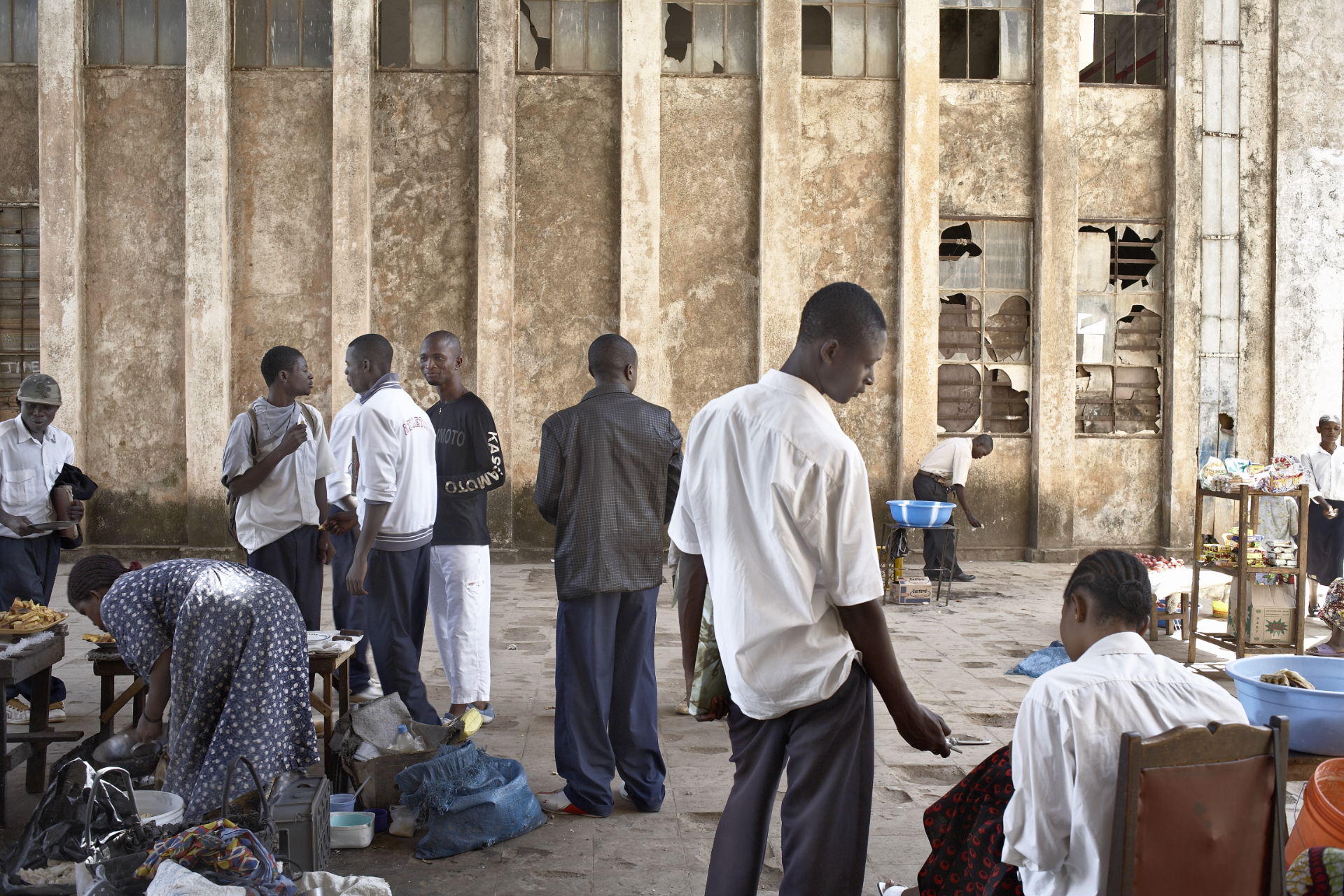
Athénée Royal High School, Lubumbashi, DR Congo, 2007 © Guy Tillim
This led to a series of photographs of African cities compiled in a book called Avenue Patrice Lumumba, and then to a project on landscape in French Polynesia and São Paulo. In a body of work called Museum of the Revolution, the pictures taken in African streets, I really endeavored to give form to that idea of neutrality: the banality of detail of an ordinary street that held you in suspension, no one element more important than the next, an absence of imposed drama, etcetera.
PG: Roland Barthes, whom you mention, criticized in another text (titled “Photo-chocs”) a certain kind of photojournalistic dramatization of political events. He writes that these images are “overconstructed,” that in their attempt to make a “good” picture, photographers have already anticipated the message of the image and left the viewer no freedom to discover anything unexpected here. These photographs, says Barthes, “lack both the scandal of the literal and the truth of art.” In my opinion this criticism applies to a great many of the images that are awarded and exhibited annually as World Press Photo. One is able to too quickly grasp which visual punchline, which photographic rhetoric or aesthetic convention the image was aimed at. What you describe as an “absence of imposed drama” also seems like an attempt to do justice to the motifs depicted, for instance a street in today’s Johannesburg or Nairobi, by not imputing their reality too quickly to a pre-formulated photographic aesthetic.
GT: In the act of taking photographs I’ve always tried to find a place, or a feeling, of suspension where the burden of the past feels light and unimposing for a moment. These moments grow longer and more coherent as I grow older, so in that respect at least taking photographs has gotten easier. What precipitated this infatuation is hard to say. I think it has much to do with working as a photojournalist in South Africa where I became increasingly aware of an unsubtle portrayal of events leading up to the end of apartheid. I felt complicit in the very often simplistic concerns and preoccupations of the people for whom the images were often made. The quickly grasped visual punchline, as you put it, was the cliché about good and evil in South Africa, and I wanted to put distance between that impulse in me and my photographs.
Initially I found refuge in a kind of lyricism that I think is evident in a body of work I called Departure. These are mostly photographs made as I moved out of the news and attempted, with indifferent success, to pitch my work at the European magazine market, but essentially they were a chronicle of my idiosyncratic wanderings around the African continent.
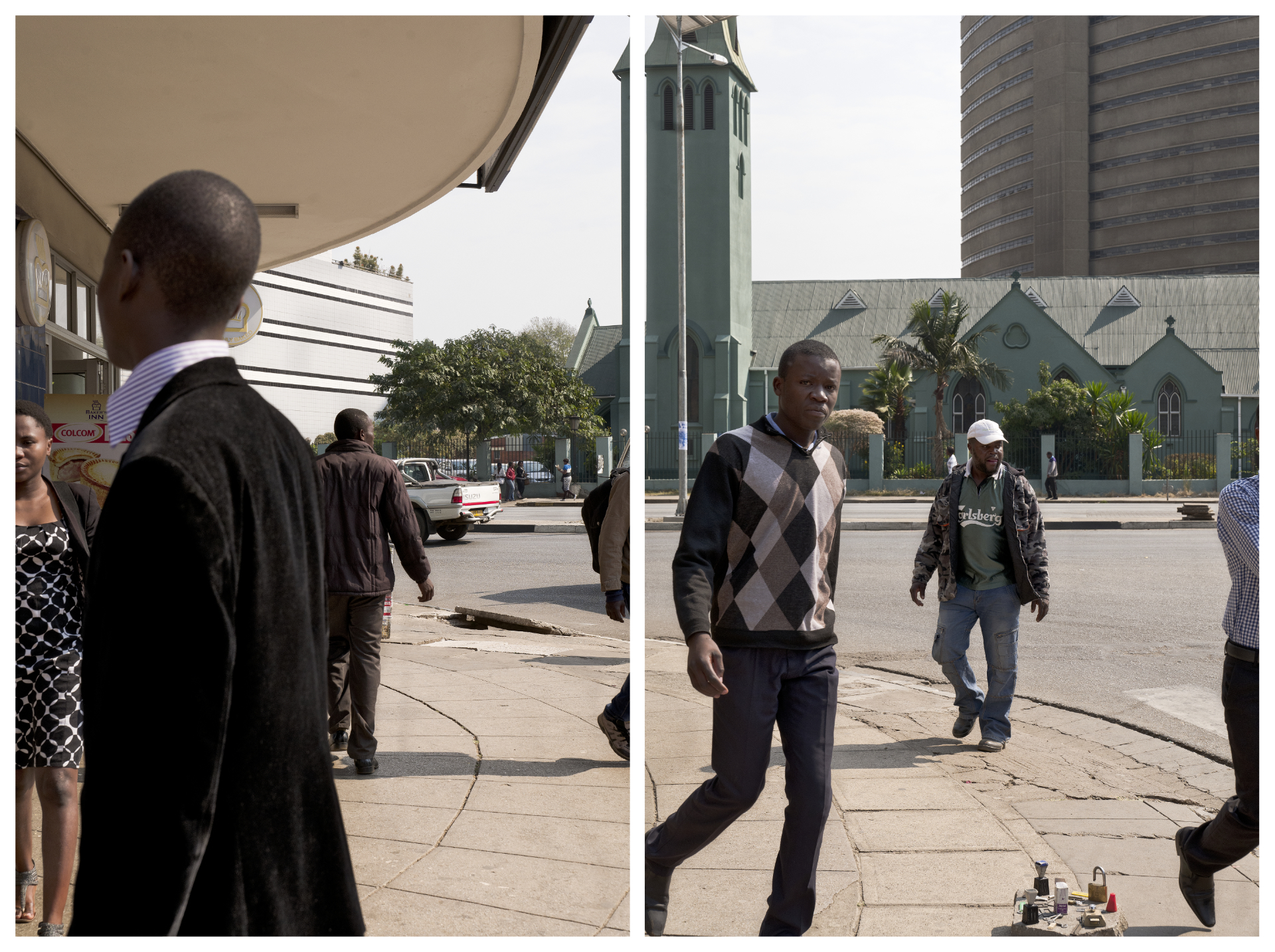
Julius Nyerere Way, Harare, 2016 © Guy Tillim
I found my feet again in Johannesburg in 2004. The demise of apartheid in 1992 meant of course that the laws governing freedom of movement were demolished, and people previously excluded from proximity to economic hubs now streamed into the city. This precipitated “white flight” and a struggle for affordable housing, offset against the economic and political cost involved in the provision of services. In short, the New York of Africa was becoming an contemporary African city and I was impatient to record the transition. It was here I realized that it was absurd to imagine that I could transform the infinite impulses of a city into a journalistic portrait in such a way that the various pieces would form a comprehensible whole, much like a completed jigsaw puzzle. For the first time ever I tried to be in a place without imposing drama and narrative, and now and then I was able to incorporate this state of being into an image.
A few years later I applied the same idea to work published as Avenue Patrice Lumumba – photographs made in African capitals. The decaying buildings had complex political reasons for being so and I was concerned that depiction of decay was a simplistic visual metaphor for an African political condition of a certain era. I wanted to avoid that because my attraction to the buildings was of a different order: one of hope and expectation, however inappropriate, in the colonial era. And the overthrow of colonial regimes, with the pathos of failed expectations that went with it. In this quest for suspension, I imagined an exciting future, of being young in a place that was becoming something new.
PG: Let’s stay for a moment with your photo book Avenue Patrice Lumumba. Lumumba was one of the first freely elected presidents of modern Africa. In an act of extraordinary courage, he used the official celebrations of Congo’s independence in Léopoldville in 1960 to confront the Belgian king with the devastating consequences of his colonial policies. Great hopes – such as those of the African independence movements – were tied to Lumumba’s presidency. Even though these hopes were pushed back by Lumumba’s assassination and Mobutu’s reign, Lumumba did not simply disappear as a political figure. Your photos of African cities were taken long after the events mentioned, but the country’s past is still peculiarly present in them. I’ve never been persuaded by Bertolt Brecht’s famous sentence that a photograph of the Krupp-Werke or the AEG says almost nothing about these institutes because it can’t depict their reality. History also shows up on the outside of things. For instance an abandoned Grand Hotel in Beira, Mozambique, on whose terrace the new residents are hanging laundry out to dry, and in view of the port of Quelimane with the words “Digital Super Power Dish” on a satellite dish in the foreground, or on the faded calendar page pinned on the closet door of an administrative office. For me the strength and beauty of your images from Avenue Patrice Lumumba is that they show those African cities as sites in the flow of history. Looking at the images, one gets the impression that all the elements of this urban landscape – the architecture, the everyday things, the vegetation, the people moving among it all – each have their own unique duration and lifetime and coexist at their different speeds. Measured against the rhetorical press images I spoke of, I find it liberating that these photos describe things very accurately while not imposing any kind of opinion or preformulated message.
GT: The photographic reportage emanating from Africa in the 1980s and 1990s was fixated on calamities of the post-colonial era and I was no exception. However, I couldn’t help but become increasingly spellbound by the landscape and the architecture of the cities, and at a certain point I lost interest in the events and focused instead on the surroundings. I wish I had done it earlier and simply paid attention to the details of ordinary things and structures in plain sight. They took on a fascinating shape and patina for me as an indisputably African identity was forged early on in those revolutions against the postcolonial regimes, in many cases embracing socialist policies and emerging as globalist, capitalist states. You put it so well: history shows up on the outside of things. The traces of it were all so evident.
I also found it liberating to approach an environment overloaded with certitude about post-colonial narrative, with a neutrality that I hoped would convey a kind of ambiguity. An ambiguity that is illustrated well in the Museum of the Revolution in Maputo. Here we find a panoramic painting produced by North Korean artists depicting the liberation of the capital from Portuguese colonial rule. It illustrates the rhetoric of a revolution even as the leader and his followers parade through those streets and avenues laid out with such grandeur by the colonial powers. Lumumba signed his own death warrant by courageously confronting the colonial powers, so we can never know how his dream may have turned out. Perhaps no one was ready for it then, perhaps it is coming true now.
PG: It seems important to me that you once again address the political dimension of your subjects. It would be a misunderstanding if one were to see the interest in neutrality that you have mentioned several times as indifference, passivity or naive belief in the impartiality and objectivity of the photograph. In fact this kind of neutrality is a form that does not arise by itself but must be found and worked out. In this respect I see your photos as an aesthetic alternative to the language of professional commentaries and manifestoes, which always know exactly what is happening and what to do next.
The photos in Museum of the Revolution are preceded by a quote from Achille Mbembe: “Postcolonial Africa is an interlocking of forms, signs and languages. These forms, signs and languages are the expression of a world striving to shape its own existence.” This interlocking and this search for new shapes can also be seen in your photos. In Museum of the Revolution there is a certain detail that beautifully captures the transitory character of the country. At the moment of people rioting you almost always show them as passersby, quite literally: pedestrians traversing an urban palimpsest of new and old, discarded and surviving forms and signs. The Museum of the Revolution is not a tomb but a place where one is on the move.
Against this background your landscape photographs once again deserve special attention. In contrast to the street pictures, the places shown on them are sometimes deserted – the tropical vegetation on Tahiti, birds over the sea coast of Tikehau in French Polynesia. The very title you have given these images, Second Nature, suggests that this cannot be about pristine and untouched nature but once again about culturally shaped and historical landscapes – visible, for example, in the presence of a wrecked car abandoned under some trees, which in its uselessness seems to gradually merge into the shape of the landscape. There is no exoticism in these images, yet nature and landscape seem to possess something independent and distinct from their inhabitants. Do I see this correctly?
GT: I think you see it precisely. I went to French Polynesia to photograph the landscape. I had read some of Captain Cook’s journals and looked at paintings made by his artist crew, particularly William Hodges on Cook’s second voyage. The painters were wonderfully skilled and attentive to topographical and atmospheric effects, but they often found it difficult to resist the urge to embellish their work with subjects lifted from mythology and set them in idealized landscapes. Their output was hugely influential in visualizing the South Pacific then, and it remains so to this day. I wondered how I would get along. How would I find this neutrality I craved in a landscape so loaded with notions of the sublime? It would be no good to take the kind of position whereby one offsets the natural beauty with something unlovely – say, a bulldozer and construction site in paradise. When I arrived I made a lavish purchase of postcards and put them up thinking to myself, Okay, so it’s all been done quite well, how would I do it differently? For me the answer was far from obvious.
One could see that for the postcard photographers the detail and monumentality of a vista were relatively easy to describe, but what lay in between was more intangible and fugitive. So I resolved to find what I can only describe as a non-hierarchical way of looking at a scene where elements like the rock, the bay, the palm and the road all found an equality. No one element cried out for special attention, but then no single element hid from a balanced and disinterested gaze either. I looked for an arresting ambiguity where it was not quite clear what was photographed. The gaze should wander. It was a state of mind more than anything else, and I think it resulted in a few interesting images. I tried to apply what I’d learned from this South Pacific adventure to African streets.
PG: All the pictures we just talked about (Avenue Patrice Lumumba, Second Nature, Museum of the Revolution) are in color. At the beginning of your work there were also series in which you worked – exclusively, I think – in black and white, for example the impressive portraits of the Mai Mai soldiers, young guerilla warriors, almost children, camouflaged in leafy twigs and holding large wooden bats. In Leopold and Mobutu there are shots in black and white, others in color. Historically this alternative has long been controversial. When, after a century of black and white, photography in color became technically possible and available, this development was by no means universally seen as progress. For a very long time it was inconceivable for many practicioners of artistic photography to work with Agfacolor or Kodacolor: the color photograph was considered vulgar, a hallmark of popular culture and the entertainment industry. Today this ideologization of color has given way to a peaceful coexistence. Nevertheless, it seems to me that the choice of color or black and white still follows certain aesthetic decisions.
GT: At the time I made those portraits of Mai Mai soldiers in the (DR) Congo in 2003, I was still working with black-and-white film stock. I had shortly before acquired a digital camera but wasn’t quite ready to work for two long months with this new technology in the wet central Congo. Storage and file processing was all new to me at this stage. My preference for black-and-white film was twofold. It was the way I was used to working for newspapers and it offered control. Color printing in a lab was expensive and relatively complicated, whereas I was proficient in a black-and-white darkoom. When digital file-processing offered me that control, I welcomed it. The first real digital color work I did was in the Congo later that year – the technology was advancing in leaps and bounds in those days – and the year after, in Johannesburg, I took pictures in the inner city and then in 2004 published them in a photobook called Jo’burg.
Thereafter I became absorbed by digital color printing and it seemed ungracious not to explore its possibilities after all those years of monochrome. Lately, in my pictures of Berlin this year, I’ve returned to black and white. Again, I think it’s about control. I intend to use digital files to make black-and-white negatives and silver prints – that is, digital capture with an analogue output. The best of both worlds I would venture to say. An analogue print has a kind of geography in and of itself – in a way that an inkjet print will never have. There’s another thing relating to the Berlin pictures. In my years of trying to emulate European photographers I was terribly jealous of the wonderfully dark tonality of their black-and-white prints, impossible to imitate under a bright African sky, so here we are.
PG: A bright sky is something that Berlin seldom has on offer. All the better, however, if the light of the city contributes to your now once again experimenting with the possibilities of the black-and-white image. Can you say a few words about your current work here in Berlin? You’ve worked in Rome before – also a city that draws its particularity from the palimpsest – like overlapping layers of time. Against the background of your previous work, one can imagine that Berlin might also be an interesting place for you. On the one hand a city of traces, on the other hand a city where one destroys what has become historical, for example the Palace of the Republic, in order to then simulate in the same place another past that is perceived as more pleasant.
GT: Yes, now that the sun has come out I’m a bit depressed. I’m sorry I never got to see the Palace of the Republic, I would have tried to incorporate it in a vista or a fleeting impression. As it was, I took some photos of the replacement, which was a promising image for a while but in the end didn’t make the cut. So my excursions around the city have been idiosyncratic, seemingly purposeless, but I hope not meaningless. It’s not for me to say really. The camera sees more than the eye; it’s more dispassionate. Again the hair-trigger analogy, the mind’s eye seems to shut down when meaning is achieved, whereas the implacable lens keeps looking. I wanted to be more like the lens, especially in Berlin where the layers are very opaque for me, in contrast to African cities where I have an emotional connection to signs and traces.
In any case these Berlin images are constructed. That is to say, the single image presented is made from two or more images. It’s something I started experimenting with in Abidjan and Dar es Salaam. It’s not a particularly complicated feat of photoshopping but the crucial thing is, paradoxically, in deciding what to leave out rather than what to include. It’s an exercise in restraint rather than indulgence. And therein lies an integrity of sorts.
The photographic world is straining to deal with integrity of the image in the digital age. The phrase “the camera does not lie” has little resonance today, as Fred Ritchin points out in a recent article for the Berlin-based ReVue Magazin für Fotografie und Wahrnehmung. He describes the paradigm shift entailed in photography’s transformation into more of a synthetic medium, much like painting. The analogue photograph’s architecture did not invite wholesale reinvention, he reminds us, its strength lay in largely leaving it alone. And he recalls Susan Sontag’s assertion that “a photograph is not only an image, an interpretation of the real; it is also a trace, something directly stenciled off the real, like a footprint or a death mask.” One wonders how visual vocabulary will rise to cope with this uncertainty. One hopes it is not with certitude.
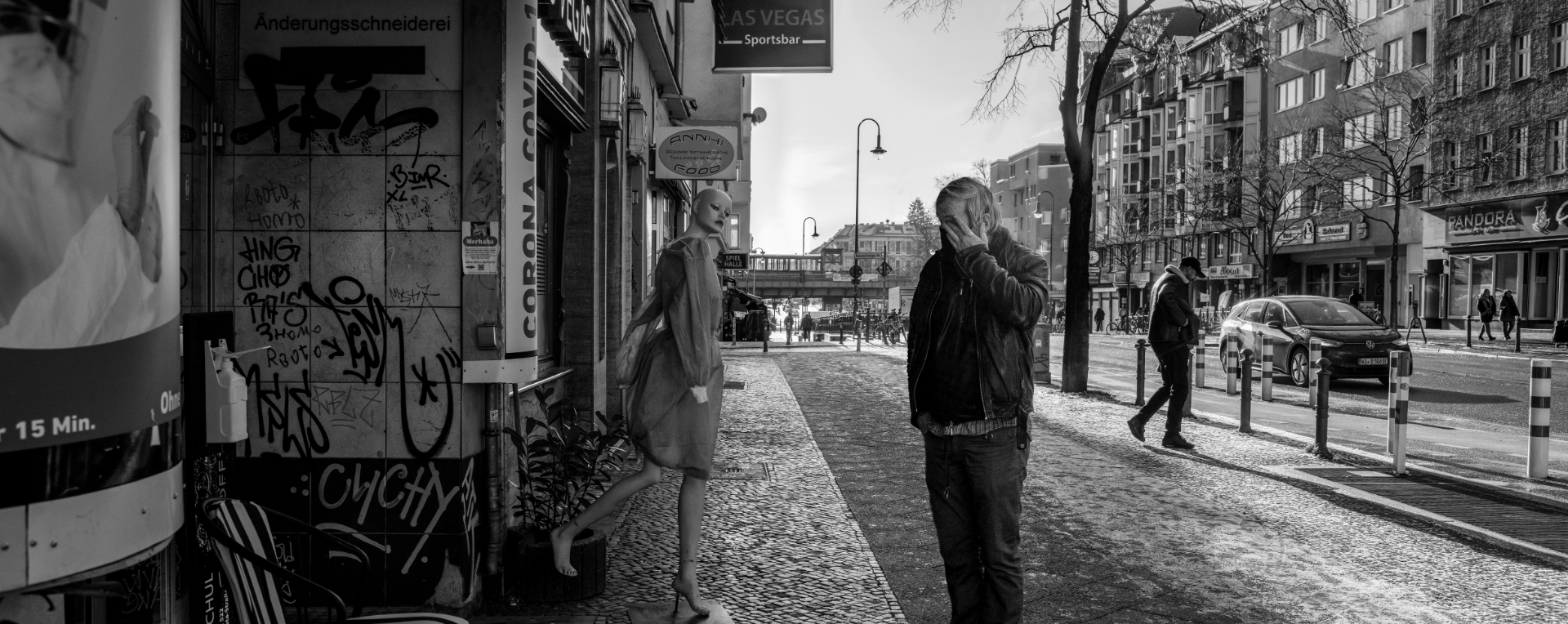
Karl-Marx-Straße, Neukölln, Berlin 2022 © Guy Tillim
[Translate to English:]
[Translate to English:]
Peter Geimer: Was mich an der Fotografie immer interessiert hat, ist ihre anfängliche Unentschiedenheit. Den Pionieren des neuen Mediums im 19. Jahrhundert war selbst noch nicht klar, was genau sie da eigentlich erfunden hatten: ein neues Instrument der Naturwissenschaft? Eine Sparte der bildenden Kunst? Eine neue Bildindustrie? In den folgenden Jahrzehnten haben sich dann verschiedene Funktionen und Sparten ausdifferenziert – Kunstfotografie, Dokumentarfotografie, wissenschaftliche Fotografie usw. Dieses Raster bestimmt auch heute noch unseren Umgang mit Fotografien, ihren institutionellen Status, aber auch ihren ökonomischen Wert oder Unwert. Andererseits hat es immer wieder Fotografien gegeben, die sich der kategorischen Aufteilung in dokumentarische oder ästhetische Aufnahmen nicht fügen. Vor diesem Hintergrund erscheinen mir deine Arbeiten besonders interessant.
Du hast für Reuters, für Afrapix, ein südafrikanisches Fotokollektiv, und Agence France-Presse gearbeitet, aber seit mehr als zwanzig Jahren ist dein fotografisches Werk auch in Kunstmuseen und Galerien zu sehen. Ich gehe davon aus, dass die dort gezeigten Arbeiten für dich rückblickend keinen radikalen Bruch mit deiner früheren fotojournalistischen Arbeit darstellen, sondern eher eine Variation bestimmter Praktiken und Interessen sind?
Guy Tillim: Diese Unentschlossenheit, von der du sprichst, ergab sich meiner Meinung nach aus dem ziemlich primitiven fotografischen Vokabular. Ich will damit sagen, dass der Wahrheitsgehalt des fotografischen Abbilds eigentlich eine sehr ungewisse Angelegenheit ist. Man nimmt sehr übereilt eine vermeintliche Absicht des Fotografen und die von ihm intendierte Bedeutung an, die aber oft im Dunkeln bleibt. Daher ist die Unterscheidung in verschiedene Teilgebiete wie Kunstfotografie, Dokumentarfotografie und Ähnliches eigentlich ein Versuch, die Absicht des Fotografen zu verstehen. Die Grenzen zwischen diesen Kategorien verschwimmen. Es gibt die Auffassung, dass die Interessen und Anliegen eines Fotografen unterschiedlich sind, je nachdem, ob seine Arbeit von der Presse oder von einer Kunstgalerie in die Welt getragen wird. Du vermutest, dass das bei mir nicht wirklich der Fall gewesen ist, und ich denke, das stimmt. Für mich lag der Unterschied in der Intention.
Ich habe den Eindruck, dass es bei der Vermittlung einer Erfahrung von Welt oder einer Sache und ihrem Verhältnis zur Welt zunehmend um den Kontext geht, oder, anders gesagt, darum, wie man eine Sache oder eine Handlung nicht auf Kosten des Ganzen isoliert. Dies hat sich in meiner eigenen Arbeit als eine Suche nach der Abwesenheit von Urteilen oder der Aufhebung von Vorurteilen niedergeschlagen. Zu fotografieren ist sicherlich eine Tätigkeit an der Vorfront des Versuchs, etwas unmittelbar zu beschreiben, und so versucht die Kunstwelt, die explosionsartige Zunahme des visuellen Vokabulars und der Lesekompetenz zu verstehen. Wir sind jetzt alle Fotografen.
Nach diesem Bruch mit dem Fotojournalismus schienen meine Bilder im Allgemeinen ein Leben in Büchern zu haben, die im Anschluss an eine Ausstellung in einer Galerie oder in einem Museum erschienen. Aber nicht immer, eine Arbeit, die ich über eine Wahl in der Demokratischen Republik Kongo gemacht habe, erschien zum Beispiel in einer Zeitung aus Kinshasa und wurde auf der documenta 12 gezeigt.
PG: Bitte lass’ uns noch einen Augenblick bei diesem Aspekt bleiben. Was du als „Abwesenheit von Urteilen“ und „Aufhebung von Vorurteilen“ beschreibst, hat vermutlich damit zu tun, dass sich deine Arbeit seit Langem schon von den Bedingungen der fotojournalistischen Praxis mit ihren professionellen Regeln und Normen gelöst hat. Zwar spielt die Wahl des Motivs – etwa das gegenwärtige Leben in afrikanischen Metropolen wie Johannesburg, Dakar, Nairobi oder Maputo – nach wie vor eine entscheidende Rolle in deinen Fotografien, aber wenn du beispielsweise in Museum of the Revolution von 2017 deine Fotos in Form von Triptychen zeigst, kommt eine hohe Aufmerksamkeit für das spezifische Potenzial der Bilder hinzu.
GT: Lange Zeit war ich damit beschäftigt, europäischen und amerikanischen Fotojournalisten nachzueifern, die ich bewunderte. Ich bewundere sie immer noch, aber ich habe mich bemüht, meinen eigenen Weg zu finden. Diese Nachahmung beinhaltete fast immer den Versuch, eine Art Vermessung der Dramatik oder Spannung aufzubauen, indem ich Figuren oder Elemente halb in den Bildausschnitt hinein- und halb herauszog. Meine Annahme war, dass dieses Vorgehen Dringlichkeit und das Eintauchen in eine Szene vermittelt, ein Engagement für eine Sache, das auf einen poetischen, unabhängigen Geist hindeutet, der versucht, einer chaotischen Welt Sinn zu geben. Ich habe diese Einflüsse mit mir herumgetragen, merkte dann aber, dass ich immer wieder nach demselben Drama suchte. Es erschien mir zunehmend absurd, ja obszön, all diese verschiedenen Situationen an dieselbe geborgte Ästhetik anpassen zu wollen. Aus dieser Erkenntnis heraus entstand in mir der Wunsch, sich auf das einzulassen, was meiner Meinung nach die größten Potenziale der Fotografie und sogar der Gemeinschaft sein könnten, etwas, das man als Bedürfnis nach Neutralität bezeichnen könnte. Vielleicht ist die „Aufhebung jeglicher Voreingenommenheit“ noch eine bessere Beschreibung. Als junger Fotojournalist in den 1980er-Jahren beim Anti-Apartheid-Kollektiv Afrapix in Südafrika betrachtete ich meine Arbeit als subversiv. Aber vielleicht war sie das gar nicht so sehr. Um Roland Barthes in Die helle Kammer zu zitieren: „Letztlich ist die Fotografie nicht subversiv, wenn sie erschreckt, abstößt oder gar stigmatisiert, sondern wenn sie nachdenklich ist, wenn sie denkt.“ Ich habe also versucht, in meiner Arbeit nachdenklich zu sein.
[Translate to English:]
[Translate to English:]
Dies führte zu einer Reihe von Fotografien afrikanischer Städte, die in einem Buch mit dem Titel Avenue Patrice Lumumba zusammengestellt sind, und dann zu einem Projekt über Landschaften in Französisch-Polynesien und São Paulo. In dem Werk Museum of the Revolution, das in afrikanischen Straßen aufgenommen wurde, habe ich wirklich versucht, dieser Idee der Neutralität eine Form zu geben: die Banalität der Details einer gewöhnlichen Straße, die einen in der Schwebe lassen, kein Element ist wichtiger als das andere, das Fehlen einer auferlegten Dramatik usw.
PG: Roland Barthes, den du erwähnst, hat in einem anderen Text, „Schockphotos“, eine bestimmte Art fotojournalistischer Dramatisierung politischer Ereignisse kritisiert. Er schreibt, diese Bilder seien „überkonstruiert“, in seinem Willen, ein „gutes“ Bild zu machen, habe der Fotograf die Botschaft des Bildes schon vorweggenommen und lasse dem Betrachter keinerlei Freiheit, hier noch etwas Unerwartetes zu entdecken. Diesen Fotos, sagt Barthes, „fehlt sowohl der Skandal des Wörtlichen als auch die Wahrheit der Kunst“. Auf einen Großteil der Bilder, die jährlich als Pressefoto des Jahres prämiert und ausgestellt werden, trifft diese Kritik meiner Meinung nach zu: Man begreift zu schnell, auf welche visuelle Pointe, auf welche visuelle Rhetorik oder ästhetische Konvention das Bild ausgerichtet war. Es gibt also keinen Grund genauer hinzuschauen, weil das Bild gewissermaßen zu „gut gemacht“ und zu schnell verständlich ist. Was du als „Fehlen einer auferlegten Dramatik“ beschreibst, scheint mir auch ein Versuch zu sein, den dargestellten Motiven, z. B. einer Straße im heutigen Johannesburg oder Nairobi, gerecht zu werden, indem man ihre Wirklichkeit nicht zu schnell einer vorformulierten Fotoästhetik unterstellt.
GT: Beim Fotografieren habe ich immer versucht, einen Ort oder ein Gefühl des Schwebens zu finden, an dem sich die Last der Vergangenheit für einen Moment leicht und unbelastend anfühlt. Diese Momente werden länger und zusammenhängender, je älter ich werde, sodass das Fotografieren zumindest in dieser Hinsicht einfacher geworden ist. Was diese Vernarrtheit ausgelöst hat, ist schwer zu sagen. Ich denke, es hat viel mit meiner Arbeit als Fotojournalist in Südafrika zu tun, wo ich mir zunehmend einer groben Darstellung der Ereignisse bewusst wurde, die zum Ende der Apartheid führten. Ich fühlte mich mitschuldig an den sehr oft grob vereinfachenden Sorgen und Belangen der Menschen, für die die Bilder häufig gemacht wurden. Die schnell erfasste visuelle Pointe, wie du es ausdrückst, war das Klischee von Gut und Böse in Südafrika, und ich wollte Abstand zwischen diesem Impuls in mir und meinen Fotografien schaffen.
[Translate to English:]
[Translate to English:]
Anfangs fand ich Zuflucht in einer Art von lyrischem Stil, der sich meiner Meinung nach in einer Reihe von Arbeiten mit dem Titel Departure (Aufbruch) zeigt. Es sind hauptsächlich Fotografien, die entstanden, als ich aus dem Nachrichtengeschäft ausstieg und mit mittelmäßigem Erfolg versuchte, meine Arbeiten an europäische Magazine zu verkaufen. Sie waren jedoch im Wesentlichen eine Chronik meiner idiosynkratischen Wanderungen über den afrikanischen Kontinent.
In Johannesburg habe ich 2004 wieder Fuß gefasst. Das Ende der Apartheid 1992 bedeutete natürlich, dass die Gesetze zur Einschränkung der Bewegungsfreiheit aufgehoben wurden und Menschen, die zuvor keinen Zugang zu den wirtschaftlichen Zentren hatten, in die Stadt strömten. Dies führte zu einem white flight und einem Kampf um erschwinglichen Wohnraum, der mit den wirtschaftlichen und politischen Kosten der Bereitstellung von Dienstleistungen verrechnet wurde. Kurz gesagt wurde das New York Afrikas zu einer entschieden afrikanischen Stadt, und ich war entschlossen, diesen Übergang zu dokumentieren. In diesem Moment wurde mir klar, wie unrealistisch es war zu glauben, dass ich die unendlichen Impulse einer Stadt in ein journalistisches Porträt verwandeln könnte, dessen einzelne Teile ein verständliches Ganzes ergeben würden, wie ein zusammengesetztes Puzzle. Zum ersten Mal versuchte ich daher, an einem Ort zu sein, ohne ihm eine Dramatik oder eine Erzählung aufzudrängen, und dann und wann gelang es mir, diesen Zustand in ein Bild einfließen zu lassen.
Dieselbe Idee wandte ich einige Jahre später auf die Arbeiten an, die als Avenue Patrice Lumumba veröffentlicht wurden – Fotografien, die in afrikanischen Hauptstädten entstanden. Es gab komplexe politische Gründe für den Zustand der verfallenden Gebäude und ich war besorgt, dass eine bestimmte Art der Darstellung von Verfall eine vereinfachende visuelle Metapher für den afrikanischen politischen Zustand einer bestimmten Ära wäre. Das wollte ich vermeiden, denn die Gebäude zogen mich auf andere Art an: Ich verband mit ihnen eine Hoffnung und Erwartung in der Kolonialzeit – wie unangebracht auch immer sie gewesen sein mag –, außerdem den Sturz der kolonialen Regime, zusammen mit dem Pathos der gescheiterten Erwartungen, die damit einhergingen. Auf der Suche nach dem Schwebezustand stellte ich mir eine aufregende Zukunft vor, jung zu sein an einem Ort, der zu etwas Neuem wurde.
PG: Bleiben wir vielleicht noch einen Augenblick bei deinem Fotobuch Avenue Patrice Lumumba. Lumumba war einer der ersten frei gewählten Präsidenten des modernen Afrika. In einem Akt außergewöhnlicher Courage hat er 1960 die offiziellen Feierlichkeiten zur Unabhängigkeit des Kongo in Léopoldville genutzt, um den belgischen König mit den verheerenden Konsequenzen seiner Kolonialpolitik zu konfrontieren. An Lumumbas Präsidentschaft waren große Hoffnungen – etwa der afrikanischen Unabhängigkeitsbewegungen – gebunden. Auch wenn diese Hoffnungen durch die Ermordung Lumumbas und die Regentschaft Mobutus zurückgedrängt wurden, ist Lumumba als politische Gestalt nicht einfach verschwunden. Die Fotos sind lange nach den erwähnten Ereignissen entstanden, aber die Vergangenheit des Landes ist in ihnen doch eigentümlich präsent. Bertolt Brechts berühmte Sentenz, wonach eine Fotografie der Krupp-Werke oder der AEG beinahe nichts über diese Institute aussagt, da sie deren Realität nicht abzubilden vermag, hat mich niemals wirklich überzeugt. Die Geschichte zeigt sich auch an den Außenseiten der Dinge: einem aufgegebenen Grand Hotel in Beira/Mosambik, auf dessen Terrasse die neuen Bewohner Wäsche zum Trocknen aufhängen, im Blick auf den Hafen von Quelimane mit der Aufschrift „Digital Super Power Dish“ auf einer Satellitenschüssel im Vordergrund, im ausgeblichenen Kalenderblatt an der Schranktür eines Verwaltungsbüros. Die Stärke und Schönheit deiner Bilder aus Avenue Patrice Lumumba besteht für mich darin, dass sie die Städte Afrikas als Orte in der Geschichte zeigen. Beim Betrachten der Bilder hat man den Eindruck, dass alle Elemente dieser urbanen Landschaft, die Architektur, die Alltagsdinge, die Vegetation, die Menschen, die sich zwischen all dem bewegen, ihre jeweils ganz eigene Dauer und Lebenszeit haben und in ihren unterschiedlichen Geschwindigkeiten nebeneinander existieren. Gemessen an den rhetorischen Pressebildern, von denen ich sprach, empfinde ich es als befreiend, dass diese Fotos sehr genau beschreiben, aber keine Meinung oder Botschaft aufdrängen.
GT: Die Fotoreportagen, die in den 1980er- und 1990er-Jahren aus Afrika kamen, waren auf die Katastrophen der postkolonialen Ära fixiert, und ich bildete da keine Ausnahme. Doch die Landschaft und die Architektur der Städte zogen mich zunehmend in ihren Bann, und irgendwann verlor ich das Interesse an den Ereignissen und konzentrierte mich stattdessen auf die Umgebung. Ich wünschte, ich hätte das schon früher getan und einfach auf die Details der gewöhnlichen Dinge und Strukturen geachtet, die offen vor mir lagen. Sie nahmen für mich eine faszinierende Form und Patina an, da sich frühzeitig eine unbestreitbar afrikanische Identität in diesen Revolutionen gegen postkoloniale Regimes formte, wobei in vielen Fällen eine sozialistische Politik verfolgt wurde und ein globalistischer, kapitalistischer Staat entstand. Du hast es sehr gut ausgedrückt: Geschichte zeigt sich an der Außenseite der Dinge. Die Spuren davon waren so offensichtlich.
Ich empfand es auch als befreiend, mich einem Umfeld, das von Gewissheiten postkolonialer Erzählungen überladen ist, mit einer Neutralität zu nähern, von der ich hoffte, dass sie eine gewisse Zweideutigkeit vermitteln würde. Eine Zweideutigkeit, die im Revolutionsmuseum in Maputo gut veranschaulicht wird: Dort gibt es ein von nordkoreanischen Künstlern geschaffenes Panoramagemälde, das die Befreiung der Hauptstadt von der portugiesischen Kolonialherrschaft darstellt. Es zeigt die Rhetorik einer Revolution, auch wenn der Führer und seine Anhänger durch die von den Kolonialmächten mit großem Aufwand angelegten Straßen und Alleen paradieren. Lumumba hat sein eigenes Todesurteil unterschrieben, als er sich den Kolonialmächten so mutig entgegenstellte, und wir werden nie erfahren, wie sein Traum ausgesehen hätte. Vielleicht war damals niemand bereit dafür, vielleicht geht er jetzt in Erfüllung.
PG: Es erscheint mir wichtig, dass du noch einmal auf die politische Dimension deiner Bildgegenstände zu sprechen kommst. Es wäre ja ein Missverständnis, wenn man das von dir mehrfach erwähnte Interesse an der Neutralität als Indifferenz, Passivität oder naiven Glauben an die Unparteilichkeit und Objektivität des Fotos verstehen würde. Tatsächlich ist diese Art von Neutralität ja eine Form, die sich gerade nicht von selbst ergibt, sondern die gefunden und erarbeitet werden muss. Insofern sehe ich deine Fotos als eine ästhetische Alternative zur Sprache der professionellen Kommentare und Manifeste, die immer genau weiß, was gerade geschieht und was als nächstes zu tun ist.
Den Fotos in Museum of the Revolution ist ein Zitat von Achille Mbembe vorangestellt: „Postcolonial Africa is an interlocking of forms, signs and languages. These forms, signs and languages are the expression of a world striving to shape its own existence.“ Diese Verflechtung und diese Suche nach einer neuen Gestalt erkennt man auch in deinen Fotos. In Museum of the Revolution gibt es ein Detail, das den transitorischen Charakter des Landes sehr schön ins Bild setzt: Du zeigst die Personen fast immer als Passanten, ganz wörtlich: im Augenblick des Ausschreitens. Die Gehenden durchqueren ein urbanes Palimpsest aus neuen und alten, abgelegten und überlebenden Formen und Zeichen: Das „Museum der Revolution“ ist kein Grab, sondern ein Ort, an dem man unterwegs ist.
Vor diesem Hintergrund verdienen deine Landschaftsfotografien noch einmal besondere Aufmerksamkeit. Im Unterschied zu den Straßenbildern sind die darauf gezeigten Orte mitunter menschenleer – die tropische Vegetation auf Tahiti, Vögel über der Meeresküste von Tikehau in Französisch-Polynesien. Schon der Titel, den du diesen Bildern gegeben hast – Second Nature – deutet darauf hin, dass es hier nicht um eine ursprüngliche und unberührte Natur gehen kann, sondern einmal mehr um kulturell geformte und historische Landschaften – sichtbar etwa in der Präsenz eines unter Bäumen abgestellten Autowracks, das in seiner Nutzlosigkeit vielleicht selbst allmählich in die Gestalt der Landschaft hineinwächst. Es gibt keinerlei Exotismus auf diesen Bildern, trotzdem scheinen Natur und Landschaft auf diesen Bildern etwas Eigenständiges, von ihren Bewohnern Unterschiedenes zu besitzen. Sehe ich das richtig?
GT: Ich glaube, du siehst das völlig richtig. Ich ging nach Französisch-Polynesien, um die Landschaft zu fotografieren. Ich hatte einige von James Cooks Tagebüchern gelesen und mir die Gemälde seiner Künstlercrew angesehen, insbesondere von William Hodges auf der zweiten Reise. Die Maler waren sehr erfahren und achteten auf topografische und atmosphärische Effekte, aber es fiel ihnen oft schwer, dem Drang zu widerstehen, ihre Werke mythologisch auszuschmücken und sie in idealisierte Landschaften zu versetzen. Ihr Schaffen hatte damals einen enormen Einfluss auf die Visualisierung des Südpazifiks, und das ist bis heute so geblieben. Ich fragte mich, wie ich zurechtkommen würde. Wie würde ich die Neutralität finden, nach der ich mich auch in einer Landschaft sehne, die so sehr mit Vorstellungen des Erhabenen aufgeladen ist? Es würde nichts taugen, einfach die natürliche Schönheit mit etwas Unschönem aufzuheben – etwa einem Bulldozer und einer Baustelle im Paradies. Als ich ankam, kaufte ich reichlich Postkarten, hängte sie auf und dachte mir: Okay, das ist alles ganz gut gemacht, wie könnte ich es anders machen? Die Antwort war für mich alles andere als offensichtlich.
Man konnte sehen, dass für die Postkartenfotografen das Detail und die Monumentalität einer Aussicht relativ leicht zu beschreiben waren, aber das, was dazwischen lag, war ungreifbarer und flüchtiger. Also beschloss ich, das zu finden, was ich nur als eine nicht hierarchische Betrachtungsweise einer Szene bezeichnen kann, in der Elemente wie der Fels, die Bucht, die Palme und die Straße gleichwertig sind. Kein Element schrie nach besonderer Aufmerksamkeit, aber es gab auch kein Element, das sich vor einem ausgewogenen und unvoreingenommenen Blick versteckte. Ich suchte nach einer fesselnden Zweideutigkeit, bei der nicht ganz klar war, was fotografiert wurde. Der Blick sollte wandern. Das war vor allem eine Geisteshaltung, und ich glaube, es sind einige interessante Bilder dabei herausgekommen. Ich versuchte, das, was ich bei diesem Abenteuer im Südpazifik gelernt hatte, auf afrikanische Straßen anzuwenden.
PG: Alle Bilder, von denen wir zuletzt gesprochen haben (Avenue Patrice Lumumba, Second Nature, Museum of the Revolution) sind in Farbe. Am Beginn deiner Arbeit gab es aber auch Serien, in denen du – ich glaube, ausschließlich – in Schwarz-Weiß gearbeitet hast, z. B. die sehr eindrucksvollen Porträts der Mai-Mai-Soldaten, einer Gruppe junger Guerillakämpfer, beinahe Kinder, die Gesichter eingehüllt in Camouflage-Astwerk und schwere Holzschläger in der Hand haltend. In Leopold and Mobutu gibt es Aufnahmen in Schwarz-Weiß, andere in Farbe. Historisch gesehen wurde diese Alternative lange Zeit kontrovers diskutiert. Als nach einem Jahrhundert des Schwarz-Weiß das Fotografieren in Farbe technisch möglich wurde, sah man diese Entwicklung keineswegs überall als Fortschritt an. Für viele Vertreter der künstlerischen Fotografie wäre es lange Zeit undenkbar gewesen, mit Agfacolor oder Kodacolor zu arbeiten: Das bunte Foto galt als vulgär, eine Signatur der Populärkultur und der Unterhaltungsindustrie. Heute ist diese Ideologisierung der Farbe einer friedlichen Koexistenz gewichen. Trotzdem scheint es mir so, dass die Entscheidung für Farbe oder Schwarz-Weiß nach wie vor bestimmten ästhetischen Grundentscheidungen folgt.
GT: Als ich 2003 diese Porträts von Mai-Mai-Soldaten in der Demokratischen Republik Kongo machte, arbeitete ich noch mit Schwarz-Weiß-Filmmaterial. Kurz zuvor hatte ich mir eine Digitalkamera angeschafft, war aber noch nicht bereit, zwei Monate lang im feuchten Zentralkongo mit dieser neuen Technologie zu arbeiten. Speicherung und Dateiverarbeitung waren für mich zu diesem Zeitpunkt etwas ganz Neues. Ich bevorzugte den Schwarz-Weiß-Film aus zwei Gründen: Es war die Art und Weise, in der ich für Zeitungen zu arbeiten gewohnt war, und sie ermöglichte Kontrolle. Der Farbdruck in einem Labor war teuer und relativ kompliziert, während ich mit einer Schwarz-Weiß-Dunkelkammer vertraut war. Als die digitale Dateiverarbeitung mir dann diese Kontrolle bot, habe ich sie sehr begrüßt. Die ersten echten digitalen Farbarbeiten machte ich etwas später im selben Jahr im Kongo – die Technologie machte damals rasante Fortschritte – und im Jahr darauf in Johannesburg, wo ich Bilder in der Innenstadt aufnahm, die 2004 in einem Fotobuch mit dem Titel Jo’burg veröffentlicht wurden.
Danach hat mich der digitale Farbdruck in seinen Bann gezogen, und es erschien mir undankbar, die neuen Möglichkeiten nach all den Jahren der Schwarz-Weiß-Fotografie nicht zu erkunden. In letzter Zeit, bei meinen Bildern von Berlin in diesem Jahr, bin ich wieder zu Schwarz-Weiß zurückgekehrt. Auch hier denke ich, dass es um Kontrolle geht. Ich beabsichtige, digitale Dateien zu verwenden, um Schwarz-Weiß-Negative und Silbergelatineabzüge zu erstellen, das heißt eine digitale Aufnahme mit einer analogen Ausgabe. Das ist von beidem das Beste, würde ich sagen: Ein analoger Abzug hat eine eigene Geografie, macht ihn zu einem eigenständigen Objekt, wie es ein Tintenstrahldruck nie sein kann. Und noch etwas ergab sich hier in Berlin: In den Jahren, in denen ich versucht habe, europäischen Fotografen nachzueifern, war ich furchtbar neidisch auf die wunderbar dunkle Tonalität ihrer Schwarz-Weiß-Abzüge, die unter einem strahlenden afrikanischen Himmel unmöglich zu imitieren ist.
PG: Einen strahlenden Himmel bietet Berlin tatsächlich eher selten. Umso besser aber, wenn das Licht der Stadt dazu beiträgt, dass du nun noch einmal zum Schwarz-Weiß zurückkehrst. Kannst du ein paar Worte zu deiner aktuellen Arbeit hier in Berlin sagen? Du hast zuvor ja bereits in Rom gearbeitet – auch eine Stadt, die ihre Besonderheit aus der palimpsestartigen Überlagerung verschiedener Zeitschichten bezieht. Vor dem Hintergrund deiner bisherigen Arbeiten kann man sich vorstellen, dass auch Berlin für dich ein interessanter Ort sein kann: einerseits eine Stadt der Spuren, anderseits eine Stadt, in der man historisch Gewordenes beseitigt, wie z. B. den Palast der Republik, um dann am gleichen Ort eine andere, als angenehmer empfundene Vergangenheit zu simulieren.
GT: Ja, jetzt, wo die Sonne herausgekommen ist, bin ich ein bisschen deprimiert. Es ist schade, dass ich den Palast der Republik nie zu Gesicht bekommen habe, ich hätte versucht, ihn in einer Ansicht oder einen flüchtigen Eindruck einzubauen. So habe ich ein paar Fotos des Nachfolgebaus gemacht, die eine Zeit lang vielversprechend schienen, aber am Ende nicht in die Auswahl kamen. Meine Ausflüge durch die Stadt waren eigenwillig, scheinbar zwecklos, aber hoffentlich nicht sinnlos. Es ist nicht an mir, das zu beurteilen. Die Kamera sieht mehr als das Auge, ist leidenschaftsloser. Wieder die Gefahr einer zu schnellen Bedeutungszuweisung. Das geistige Auge scheint sich abzuschalten, wenn eine Bedeutung geschaffen ist, während die unerbittliche Linse weiterschaut. Ich wollte mehr wie ein Objektiv sein, besonders in Berlin, wo die Schichten für mich fast undurchsichtig sind, im Gegensatz zu afrikanischen Städten, in denen ich eine emotionale Verbindung zu Zeichen und Spuren habe.
Auf alle Fälle sind diese Berliner Bilder konstruiert. Das heißt, dass das einzelne Bild aus zwei oder mehr Bildern zusammengesetzt ist. Das ist etwas, womit ich in Abidjan und Daressalam zu experimentieren begonnen habe. Es ist kein besonders kompliziertes Photoshop-Kunststück, aber das Entscheidende liegt paradoxerweise darin, zu entscheiden, was weggelassen, und nicht, was dringelassen werden soll. Es ist eher eine Übung in Zurückhaltung als in Schwelgerei. Und darin liegt eine gewisse Integrität.
Die Welt der Fotografie hat Mühe, mit der Integrität des Bildes im digitalen Zeitalter umzugehen. Der Satz „Die Kamera lügt nicht“ findet heute wenig Resonanz, wie der Fototheoretiker Fred Ritchin in einem kürzlich erschienenen Artikel für das Berliner ReVue – Magazin für Fotografie und Wahrnehmung feststellt. Er beschreibt den Paradigmenwechsel der Fotografie hin zu einem synthetischen Medium, ähnlich der Malerei. Die Architektur der analogen Fotografie lud nicht zu einer umfassenden Neuerfindung ein, sondern ihre Stärke lag darin, dass sie weitgehend sich selbst überlassen wurde, erinnert er uns. Und er erinnert an Susan Sontags Aussage, dass „eine Fotografie nicht nur ein Bild, eine Interpretation des Realen ist; sie ist auch eine Spur, etwas, das direkt vom Realen abgeschrieben ist, wie ein Fußabdruck oder eine Totenmaske“. Man fragt sich, wie das visuelle Vokabular mit dieser Ungewissheit zurechtkommen wird. Hoffentlich nicht mit Gewissheit.
More on: Guy Tillim
Images: © Maurice Weiss
